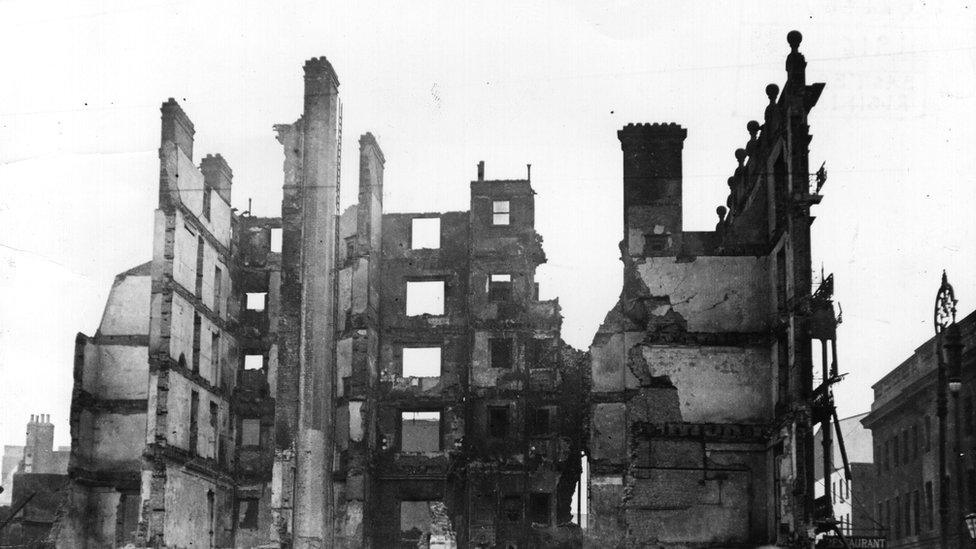Easter Rising 1916: Almost 500 people die in six days of fighting
- Published

The ruins of Sackville Street, Dublin, after the Easter Rising
Almost 500 people died during the six days of the 1916 Easter Rising.
More than half of the 485 who were killed were civilians.
They came from a cross-section of society, a mixture of wealthy and poor, from the very young to the very old.
The youngest recorded civilian death is a child of 22 months, while the oldest fatality was 82-years-old.
Most of those who died were interred at Glasnevin Cemetery in Dublin.
According to the Glasnevin Trust, 16% of all fatalities of the Rising were rebel forces, 29% were crown forces and police and 55% were civilians.
More than a third of all military deaths were Irishmen enlisted in the service of the Crown to fight in the Great War, who were either at home on leave, or stationed in Dublin barracks.
A priest visits rebels injured in the fighting
Although the number of female victims was high, most of those who died were working class men. Their families were, according to a local merchant speaking to the Irish Independent, "left in a destitute situation".
While the bereaved spouses of rebels would later be able to claim a widow's military pension from the Irish Free State (as documented in the Irish Military Archives), the widowed spouses of general labourers would not.
A handbill issued to warn people of possible disease after the Rising
Not all of those who died in the Rising were ever formally identified. Two of those 'unknowns' were taken for interment from the City Morgue. At least one is known to be interred in the poor plot in Glasnevin Cemetery in the north of the city.
In 1929 a memorial headstone to the rebels was erected at Glasnevin, where 13 rebels, Irish Volunteer and Citizen Army, were buried in a mass unmarked grave.
The majority of those killed in the Easter Rising were buried in Glasnevin Cemetery
Nearby lie a greater number of the civilian dead of the Rising, many of them sharing unmarked graves; some of them identified by a plot number.
While Dublin was in lockdown, and the movement of people restricted, normal funerary arrangements could not keep up with the rising death toll, and many of those killed were not laid to rest for several days.